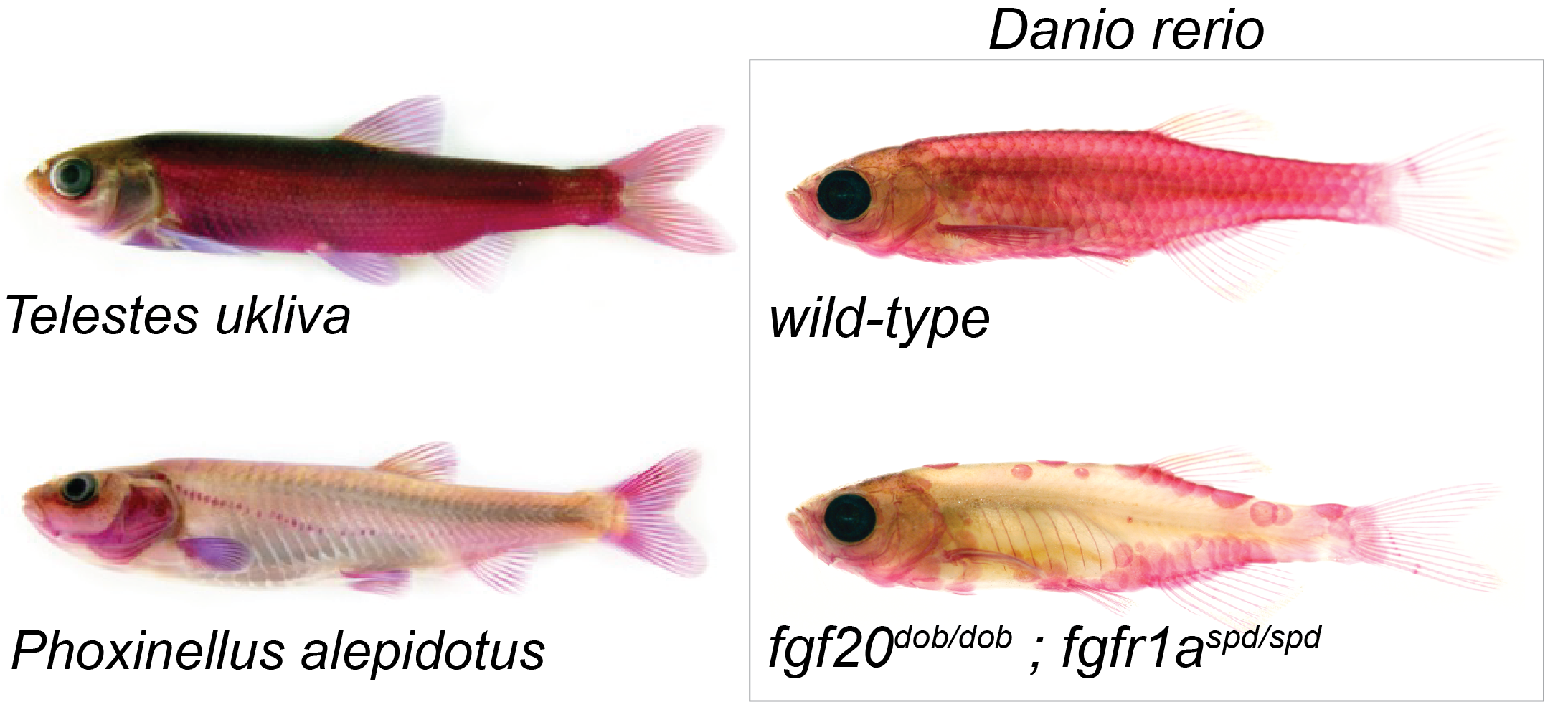Abstract
The identification of genetic mechanisms underlying evolutionary change is critical to our understanding of natural diversity, but is presently limited by the lack of genetic and genomic resources for most species. Here, we present a new comparative genomic approach that can be applied to a broad taxonomic sampling of nonmodel species to investigate the genetic basis of evolutionary change. Using our analysis pipeline, we show that duplication and divergence of fgfr1a is correlated with the reduction of scales within fishes of the genus Phoxinellus. As a parallel genetic mechanism is observed in scale-reduction within independent lineages of cypriniforms, our finding exposes significant developmental constraint guiding morphological evolution. In addition, we identified fixed variation in fgf20a within Phoxinellus and demonstrated that combinatorial loss-of-function of fgfr1a and fgf20a within zebrafish phenocopies the evolved scalation pattern. Together, these findings reveal epistatic interactions between fgfr1a and fgf20a as a developmental mechanism regulating skeletal variation among fishes.
